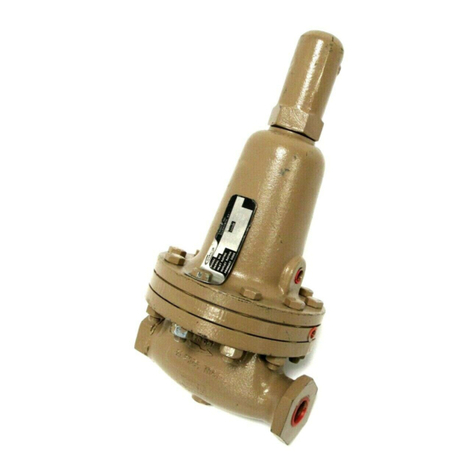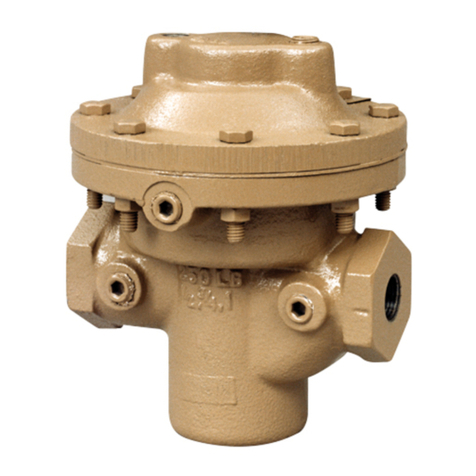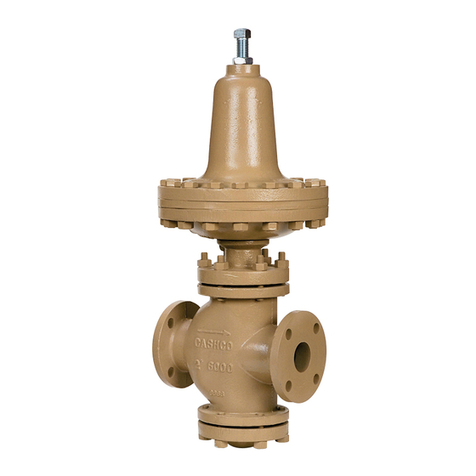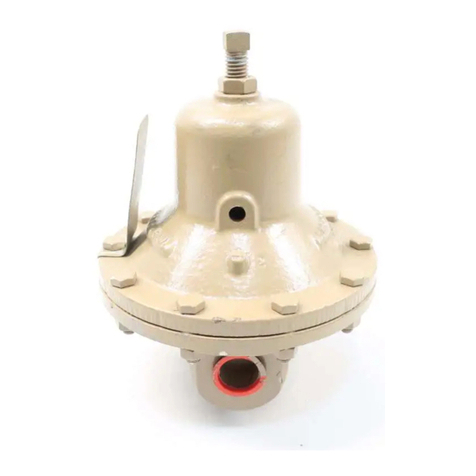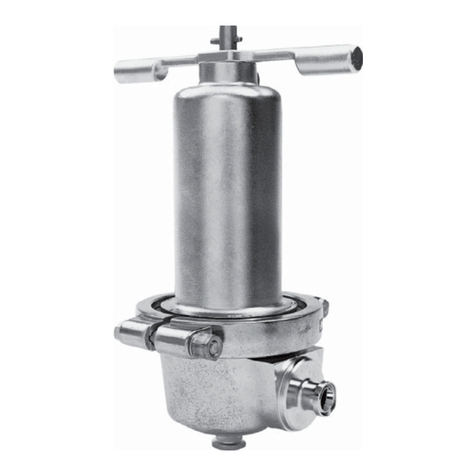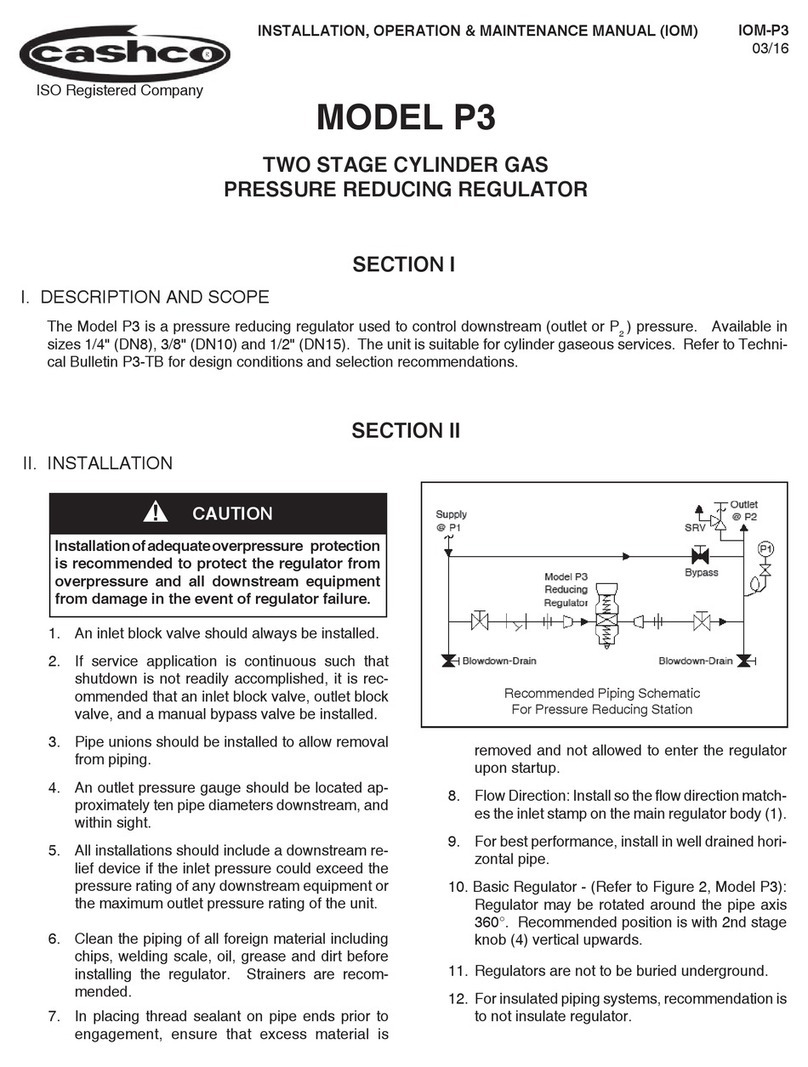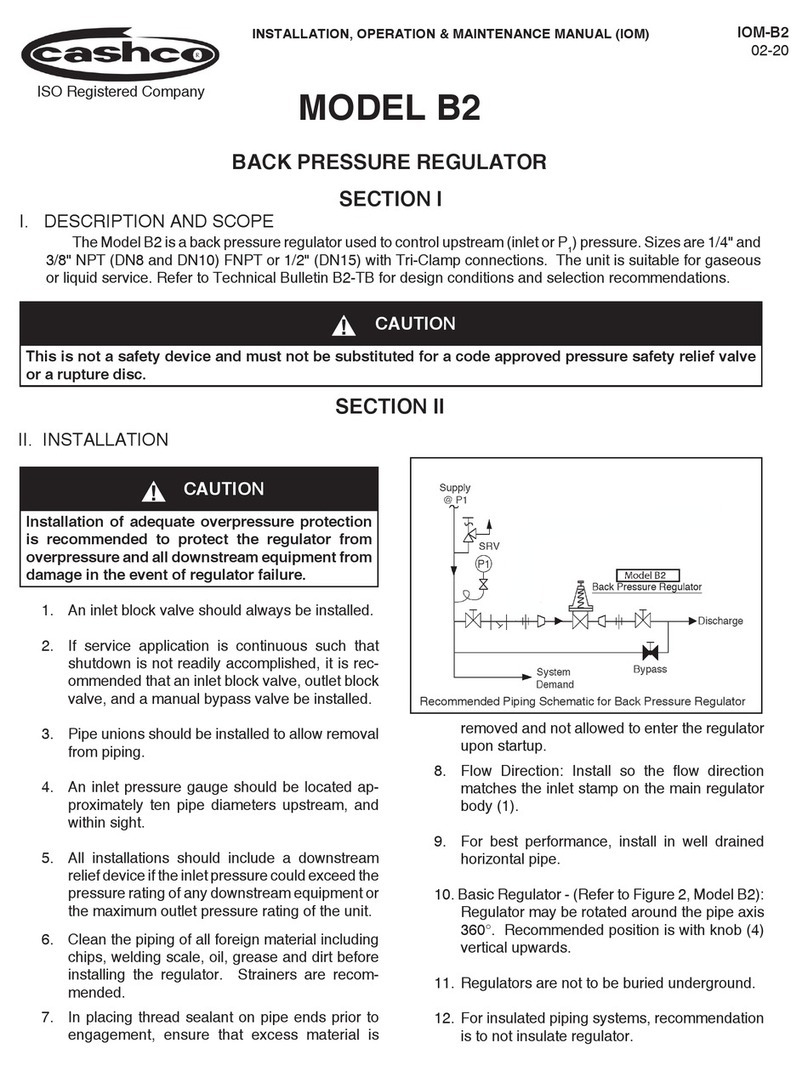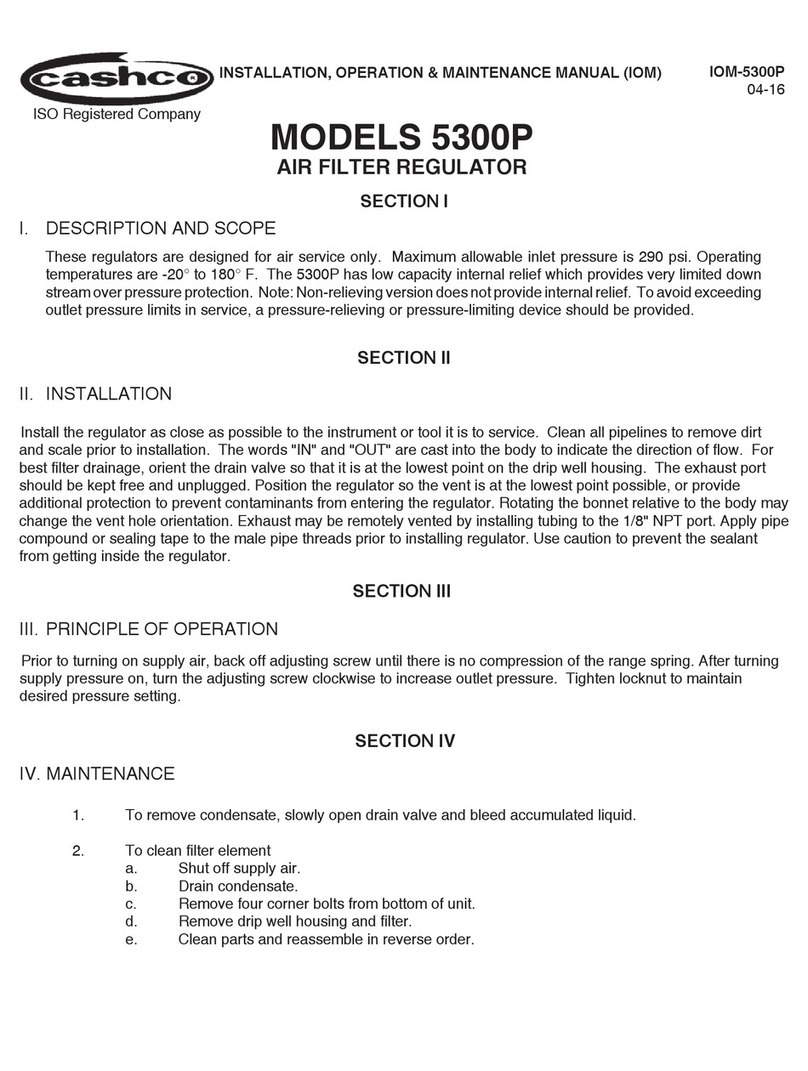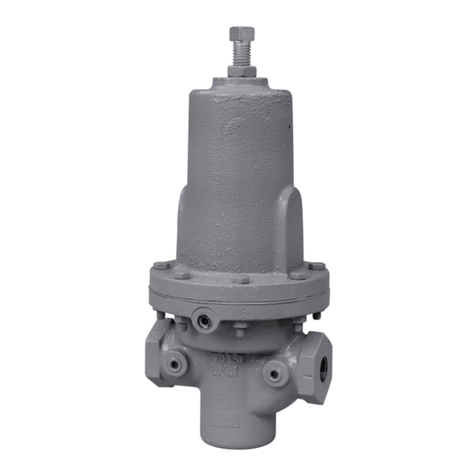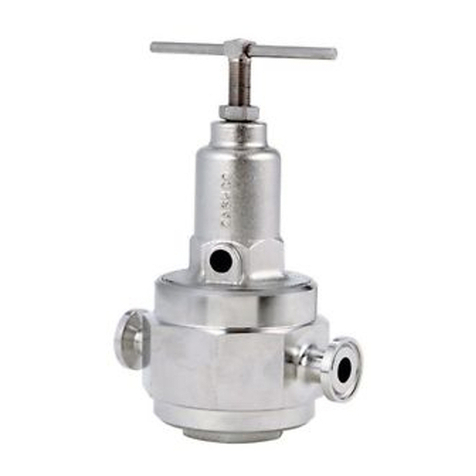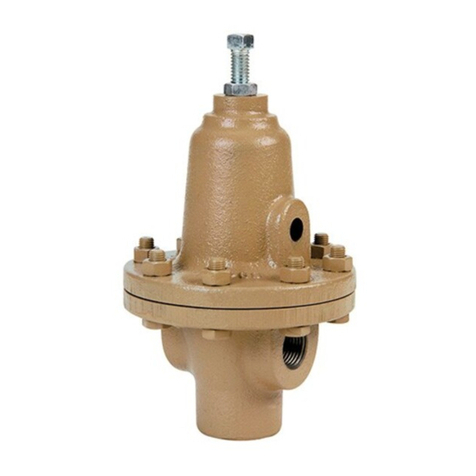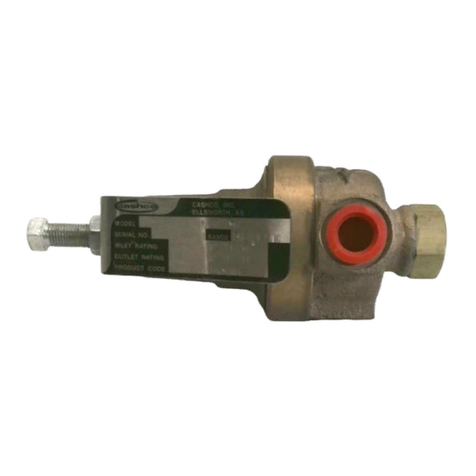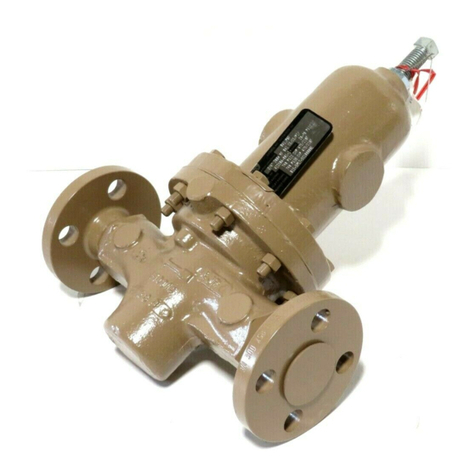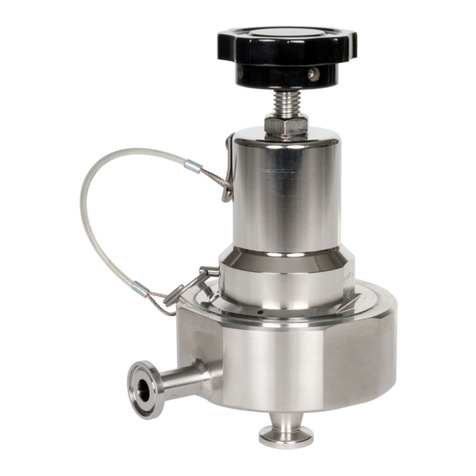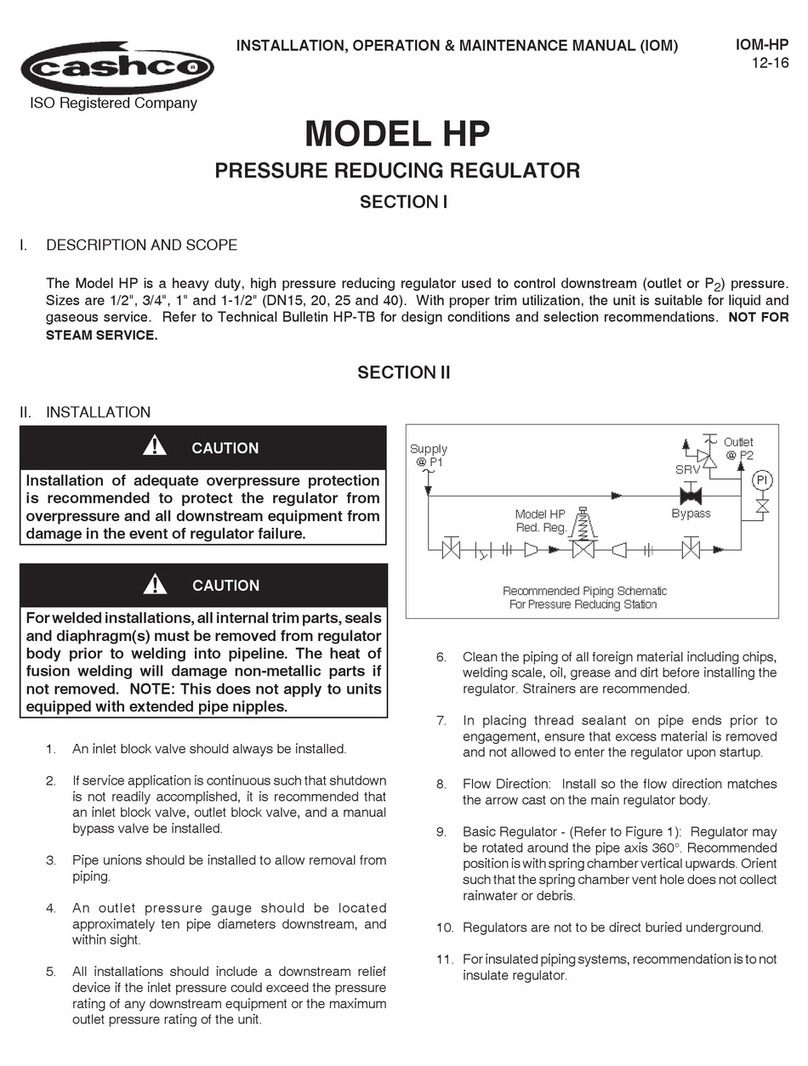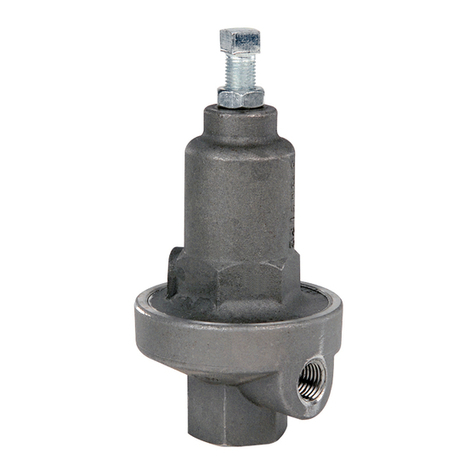
IOM-B7
2
SECTION IV
IV. STARTUP
SECTION V
V. SHUTDOWN
SECTION III
III. PRINCIPLE OF OPERATION
1. Movement occurs as pressure variations register on
the piston (5). The registering pressure is the inlet,
P1, or upstream pressure. The range spring (12)
opposes piston movement. As inlet pressure drops,
the range spring pushes the piston down, closing the
port; as inlet pressure increases, the piston pushes
up and the port opens.
2. A piston failure will cause the regulator to fail closed.
1. Start with the block valves closed. A bypass valve
may be used to maintain inlet pressure in the up-
stream system without changing the following steps.
2. Relax the range spring (12) by turning knob (20)
or adjusting screw (14) counter clockwise (CCW) a
minimum of three full revolutions. This reduces the
inlet pressure setpoint.
3. If it is a “hot” piping system, and equipped with a by-
pass valve, slowly open the bypass valve to pre-heat
the system piping and to allow slow expansion of the
piping. Closely monitor inlet (upstream) pressure via
gauge to assure not over-pressurizing. NOTE: If
no bypass valve is installed, extra caution should be
used in starting up a cold system; i.e. do everything
slowly.
4. Crack open the inlet (upstream) block valve.
5. Slowly open the outlet (downstream) block valve
observing the inlet (upstream) pressure gauge.
Determine if the regulator is flowing. If not, slowly
rotate the regulator knob or adjusting screw CCW
until flow begins.
6. Continue to slowly open the outlet (downstream)
block valve until fully open.
7. Observing the inlet (upstream) pressure gauge, ro-
tate knob or adjusting screw clockwise (CW) slowly
until the inlet pressure begins to rise. Rotate CW
until the desired setpoint is reached.
8. Continue to slowly open the inlet (upstream block
valve. If the inlet (upstream) pressure exceeds the
desired setpoint pressure, rotate knob or adjusting
screw CCW until the pressure decreases.
9. When flow is established steady enough that both
the outlet and inlet block valves are fully open, begin
to slowly close the bypass valve, if installed.
10. Develop system flow to a level near its expected
normal rate, and reset the regulator setpoint by
turning knob or adjusting screw CW to increase inlet
pressure, or CCW to reduce inlet pressure.
11. Using a downstream valve, reduce system flow to a
minimum level and observe setpoint. Inlet pressure
will rise from the setpoint of Step 9. (Ensure this rise
does not exceed the stated upper limit of the range
spring by greater than 50%, i.e. 2-50 psig (.14 - 3.4
Barg) range spring, at maximum flow the inlet pres-
sure should not exceed 1.5 x 50 psig (3.4 Barg), or
75 psig (5.2 Barg). If it does, consult factory).
12. Increase flow to maximum level, if possible. Inlet
(upstream or P1) pressure should fall off. Readjust
setpoint as necessary at the normal flow rate.
1. On systems with a bypass valve, and where system
pressure is to be maintained as the regulator is shut
down, slowly open the bypass valve while closing the
inlet (upstream) block valve. Fully close the inlet (up-
stream) block valve. (When on bypass, the system
pressure must be constantly observed and manually
regulated. Close the outlet (downstream) block
valve.
CAUTION
The maximum inlet pressure is stamped on the
body as the upper range spring pressure level, and
is the recommended “upper operative limit” for the
sensing piston (see Section IV. Startup, Step 7).
Higher pressures could damage the internals. DO
NOT HYDROSTATIC TEST THRU AN INSTALLED
UNIT; ISOLATE FROM TEST.)
CAUTION
Do not walk away and leave a bypassed regulator
unattended.
